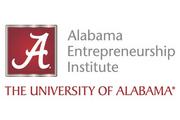
Over eight weeks during the summer, we have been working with our 2023 Crimson Entrepreneurship Academy (CEA) students. We had 27 students in the program. CEA, which is a pre-accelerator, focuses on helping students who have ideas for businesses, many of whom competed in our annual student business plan competition, move their ideas forward.
We found that most students do not have the luxury of working full time on their businesses, and that is one reason they fail to make considerable progress. The CEA initiative focuses on programming based on three pillars: building confidence, building a business and building networks. During the summer they improve their business by doing customer discovery, learning from experts on campus and in our community and helping each other.
We started the CEA program in summer of 2019. To date, we have had over a 70% success rate in students keeping their businesses moving forward. In many cases, they are working on their businesses while holding down a full-time job, and in some cases, they decided their idea was not worth pursuing. We are focused on the learning, and some of the most successful entrepreneurs are serial entrepreneurs, so failing fast also is a success.
I was very impressed with this cohort’s ability to help each other via peer coaching. The cohort consists of students from numerous different colleges, thus they have unique skills. Some are in STEM programs and are very qualified engineers and scientists, while others are focused on building not-for-profit businesses to help solve problems they see in their communities. Teams are diversified with members who are focused on marketing, business, and product development. It is the diversity of their skills, thinking and backgrounds that leads them to learn so much from each other.
In other areas of research, I have found the power of collisions helping drive change and innovation. This idea is at work with our CEA students also. Collision theory states that molecules must collide to get a reaction. When our students positively collide with each other and with the guests we bring to the program, their personal energy is increased, and their output is positively enhanced. I was pleased to see students not just meet with the same people every day; they went out of their way to meet new people and to learn about them. It was their ability to created positive collisions that helped them evolve tremendously in just eight weeks.
This experience makes me think about what happens in larger corporations. How do leaders create powerful and positive collisions to assure that people from different departments and backgrounds meet and work together? It is so much easier to stay in our own silos, but by getting out and engaging with other employees who are not like us, we find that people improve their internal energy at work and also their productivity and ability to innovate.
Take the challenge. Think about creating positive collisions and releasing potential to drive growth and innovation in your own organizations.
